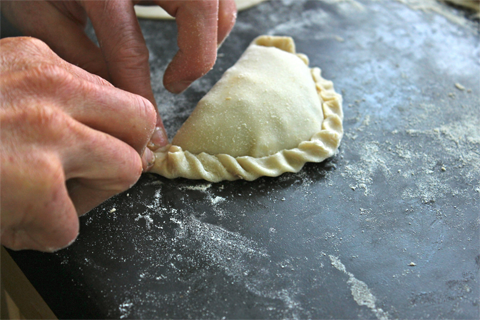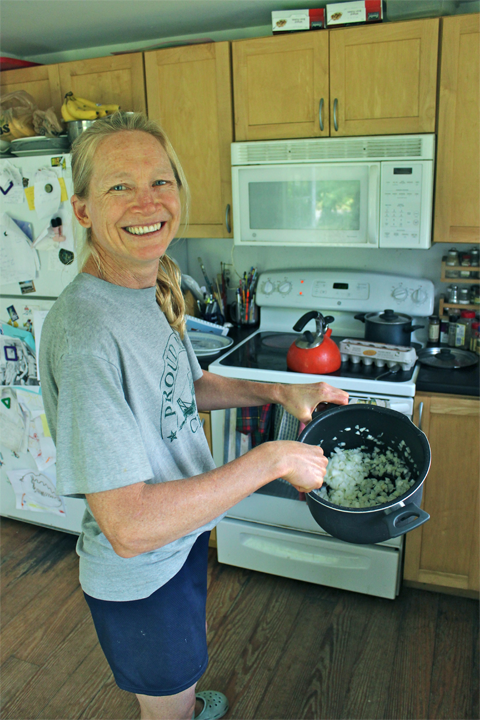
CLOSING CEREMONIES These pie-makers know their boundaries |
Growing up in Argentina, Valy Steverlynck came from a family of not-so-great cooks. “At dinner,” she explains, “the meal would be set up with an announcement that the named family member who cooked it actually produced something that was edible.” Aunt Nina was the exception. She was the only one who could really cook. Once, when Valy (pronounced like “volley”) was seven or eight years old, she smelled heaven coming from the kitchen. She descended the stairway and saw Aunt Nina in her white cotton apron making one of the family’s favorite foods: beef empanadas. Aunt Nina, with her usual quiet but sturdy affection, waved Valy in and showed her how to make the hand-held, savory pies that everybody loved.
Cooking with Aunt Nina was about as much fun as anything could be. Valy recalls, “Cooking is a little bit like making art. You never know how it’s going to come out. It’s always interesting, a little different every time—and then you get to share it. And it was always such a challenge to make something edible.”
Under Aunt Nina’s instruction, Valy smashed soft lard into the bowl of flour, and kneaded in water and a little beer until the dough would stretch without cracking. Then she rolled it out into a flat sheet and used an overturned bowl to cut it into discs. Aunt Nina brought over a steaming pot of filling that she’d made out of sautéed onions, red pepper, ground beef, tomatoes, paprika, oregano, fresh parsley, hardboiled egg, green olives, and a small handful of raisins. Nina showed Valy how much of the filling to spoon onto every piece of dough. Valy went on copying her as best she could. She wet the edge of the disc to make it sticky, folded the dough in half over the mound of filling, and pressed the two sides together to seal the filling inside a half-moon-shaped packet.
Twisting the edges of the packet into the pretty repulgue pattern took practice. Aunt Nina’s decoration was perfect and beautiful, looking like a smooth half-braid around the edge of the pie. Empanada after empanada, Valy improved her repulgue skills, proudly pricking the top of each completed packet with a fork when she was done. (The steam vent prevented all their neat work from bursting in the heat of the oven.) Finally, Valy watched the oven do its trick, making all the pretty pies turn golden and irresistible.
 NO TEARS HERE Valy Steverlynck preparing the empanadas
|
Valy ended up going to college in the United States, marrying an American, and moving to his hometown in Maine. When Argentina was vying for the World Cup, she threw a party to watch the game with friends on TV. In Argentina, where there’s a party, there are empanadas, so she got cooking. Valy showed me how to make empanadas like Aunt Nina had showed her. There are all different kinds.
Empanadas de carne, the ones we were making, are filled with ground beef;
empanadas de pollo, with pulled chicken;
empanadas de pescado, with tuna fish and red peppers;
empanadas de humita, with corn and cheese; and
empanadas de jambon y queso, with ham and cheese.
This time Valy’s parents and brothers and sisters weren’t there to make the usual announcement: “Hey everyone, Valy has made something edible!” However, the wideness of her own kids’ eyes upon seeing the golden pies come out of the oven did indicate that the family tradition of surprised gratitude lives on. I think one thing is true for all cooks, good and bad, the world over: the arrival of good food always feels like a bit of a miracle.